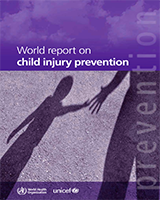BOX 5.1Falls from trees in Mozambique
In 2006, an injury and violence survey was conducted in Mozambique. The study covered 179 households from the urban district of Matola and 162 from the rural district of Boane, both areas in the southernmost part of the country.
Falls were the leading cause (31.7%) of injury in Boane district, while they accounted for 23.8% of injuries in Matola district, surpassed only by road traffic injuries, accounting for 34.7% of all injuries. Twenty-eight per cent of all the falls involved children and adolescents under the age of 20 years. Many of the falls were from trees, a common occurrence in developing countries.
In one of the most rural parts of Boane district, a widowed mother with seven children is in tears as she tells the story of her eldest son, José. José broke his leg after falling from a coconut tree while collecting fruit for the family’s breakfast. Now aged 17 years, he is permanently disabled. One of his legs had to be amputated because he did not receive immediate care. His mother recalls that neighbours tried to help soon after the fall, but that it took many hours to get him to the nearest health-care facility. On arrival there it was apparent that the fracture was compound and the facility lacked the necessary equipment to handle his case. He was consequently referred to Maputo Central Hospital, a further three hours’ drive away. It was 17 hours before José was seen by an orthopaedic surgeon. José’s mother has now lost her primary breadwinner. She reflects on their experience, saying “these are the realities of the day-to-day life we have to deal with in Mozambique.”
José’s case is not an isolated one. Data from the emergency department surveillance system in Maputo Central Hospital show that falls account for 40% of those presenting to the emergency department, with children under 18 years of age making up almost two thirds of these cases. Seventy-five per cent of the serious fall injuries among children are the result of their falling from trees, usually around the home.
